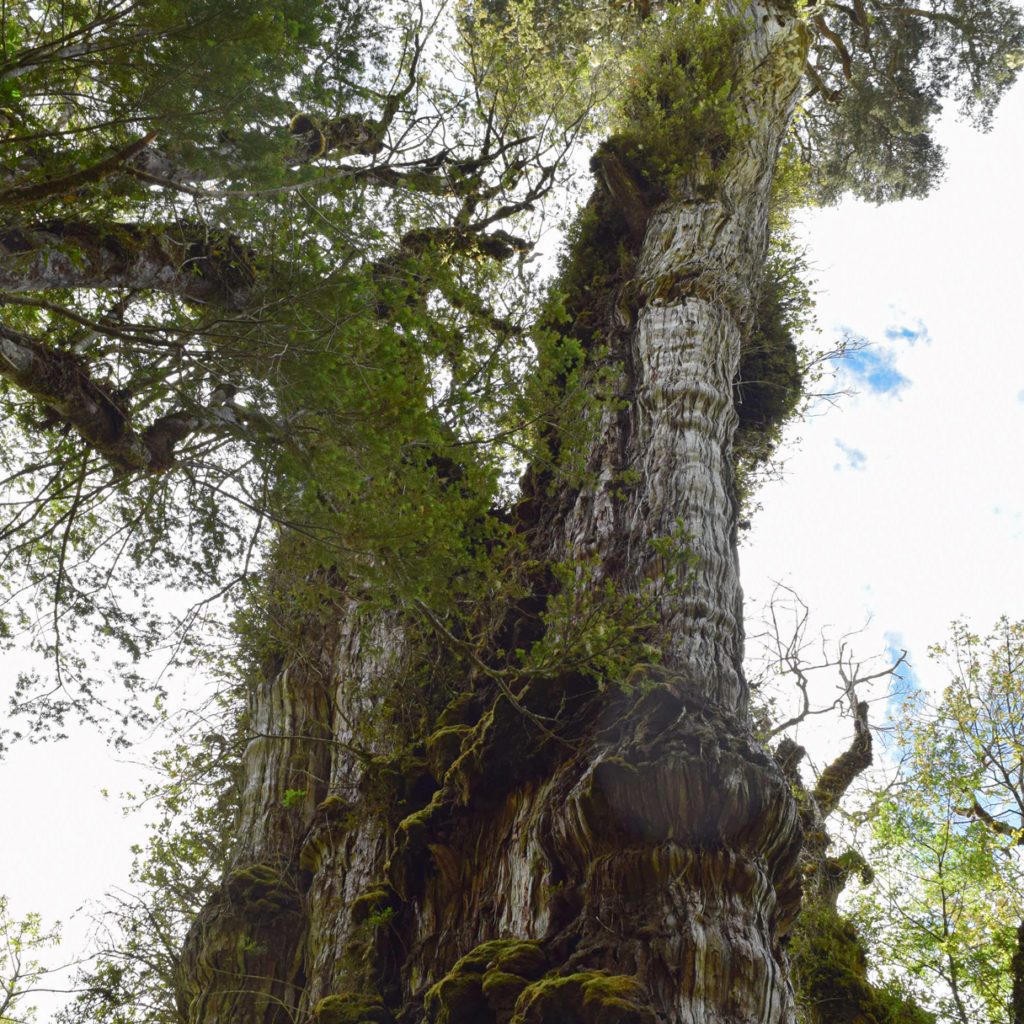
About 5400 years ago, when human first “invented” writing, an alerce (Fitzroya cupressoides) may have begun its journey in the coastal mountains of present-day Chile. The tree, which is sheltered in a cool, damp ravine, has avoided fires and logging that has claimed many of its kind. This massive organism is more than 4 meters across. Much of the trunk, unfortunately, has died, part of the crown has fallen away, and it became festooned with moss, lichen and other trees which have taken root in its crevices.
The tree, which is known as Alerce Milenario or Gran Abuelo (Great-Grandfather Tree), may, in fact, be the oldest living organism on Earth. Whoa! Researchers have used a combination of computer models and traditional methods for calculating tree age. Jonathan Barichivich is a Chilean environmental scientist who works in Paris at the Climate and Environmental Sciences. His best estimate is that the Alerce Milenario is more than 5000 years old.
If that is the case, then, the Gran Abuelo would make it at least one century older than the current oldest tree, known as Methuselah. Methusaleh is a bristlecone pine in Eastern California that has 4853 years’ worth of annual growth rings under its bark. Of course, many dendrochronologists are skeptical of Barichivich’s claim, which has not yet been published.
Why would they be skeptical? Well, for one thing, the tree doesn’t have a full count of tree growth rings so it’s hard to determine its actual age. However, some experts are open to the possibility that the Alerce Milenario is truly that old. Harald Bugmann, a dendochronologist at ETH in Zurich, trusts that the “analysis Jonathan has made” is true. He lauds Barichivich’s research and says the Chilean researcher has taken a very ‘smart approach’ to his claim.
Alerces are conifers and genetic relatives to giant sequoias and redwoods. From a distance, they actually resemble these giant trees. Alerces can grow to extreme ages as Antonio Lara of the Austral University in Valdivia, Chile, proved back in the 1990s. In a 1993 study, Lara and a colleague reported an alerce stump with 3622 growth rings. That made the species younger than bristlecone pines but older than sequoias so it’s considered the second-oldest tree species on record.
That seminal study did NOT include the Alerce Milenario probably because the tree stands apart from other ancient trees in a rainforest west of La Union, a city in Chile. Barichivich says his grandfather discovered the tree back in 1972. Both his grandfather and mother worked as rangers in the park where the tree resides. Barichivich believes he’s one of the first children to ever see the tree. We can’t corroborate that claim, but it makes for a nice story.
In 2020, Barichivich and Lara cored part of the Alerce Milenario – this was before the pandemic hit – with an increment borer. An increment borer is a T-shaped drill that scientists use to excise narrow cylinders of wood without harming the tree. The plug of wood yielded about 2400 growth rings.
Because the researchers couldn’t get to the tree’s center, Barichivich used statistical modeling to determine the Gran Abuelo’s full age. He used completed cores from other alerce trees as well as information on how environmental factors and random variation affect tree growth. He did this all to calibrate a model that simulated a range of ages that the tree had reached by the beginning of the period of the partial core. He also figured out a probability of each age. The method he used yielded an overall age estimate of 5484 years old with an 80% chance that the tree has lived past five thousand years. Barichivich admits he was ‘astonished’ by the findings. He did not think the tree was older than 4,000 years.
Other researchers are more purist and nature. They believe the ‘only way’ to tell the age of a tree is to count its growth rings. As Ed Cook, a founding director of the Tree Ring Laboratory at Columbia University, said, “That requires that ALL rings be present and accounted for.” Barichivich maintains that his method accounts for any statistical anomalies and plans to submit a paper showcasing his findings and his method soon.
Barichivich says that regardless of his findings that the Chilean government should do more to protect the Alerce Milenario. Visitors to the tree are walking all around it and harming the soil as well as the tree’s roots. With the climate become drier, that compounds the tree’s difficulties. Barichivich believes that “people are killing” the tree and “it requires our protection urgently.”
Regardless of whether the Alerce Milenario is as old as Barichivich believes it to be, we must pay attention to how some trees can live longer than most of their peers. Currently, scientists don’t have any idea as to why or how. It’s important to remember that there are still mysteries in our forests.
We really hope you enjoyed this article as much as we did researching and writing it. Thank you so much for your readership. It means the world to us.











